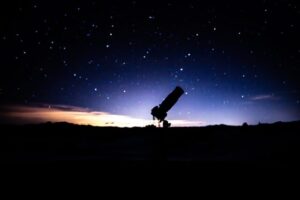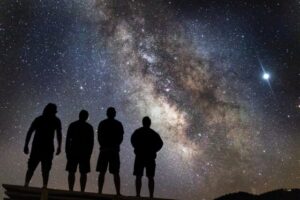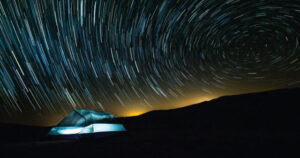On July 5, 2016, the moon passed between NOAA's DSCOVR satellite and Earth. NASA's EPIC camera aboard DSCOVR snapped these images over a period of about four hours. In this set, the far side of the moon, which is...
Rendering of the orbit of RR245 (orange line). Objects as bright or brighter than RR245 are labeled. The Minor Planet Center describes the object as the 18th largest in the Kuiper Belt.Credit: Alex Parker, OSSOS
An international team of astronomers...
At left, in optical light, UGC 1382 appears to be a simple elliptical galaxy. But spiral arms emerged when astronomers incorporated ultraviolet and deep optical data (middle). Combining that with a view of low-density hydrogen gas (shown in green...
This image shows the remnant of Supernova 1987A seen in light of very different wavelengths. ALMA data (in red) shows newly formed dust in the centre of the remnant. Hubble (in green) and Chandra (in blue) data show the...
At the poles of Ceres, scientists have found craters that are permanently in shadow (indicated by blue markings). Such craters are called "cold traps" if they remain below about minus 240 degrees Fahrenheit (minus 151 degrees Celsius). These shadowed...
Bright noctilucent or night shining clouds are not familiar sights from northern France. But these electric-blue waves coursed through skies over the small town of Wancourt in Pas-de-Calais on July 6, just before the dawn. From the edge of...
Blue dots on this map indicate sites of recurring slope lineae (RSL) in part of the Valles Marineris canyon network on Mars. RSL are seasonal dark streaks that may be indicators of liquid water. The area mapped here has...
ESO 137-001 is a perfect example of a spiral galaxy zipping through a crammed cluster of galaxies. Gas is being pulled from its disc in a process called ram pressure stripping. The galaxy appears to be losing gas as...
This artist's impression shows a view of the triple star system HD 131399 from close to the giant planet orbiting in the system. The planet is known as HD 131399Ab and appears at the lower-left of the picture.CREDIT: ESO/L....
The Perseus galaxy cluster is filled with hot X-ray-emitting gas, as seen in this image from NASA's Chandra X-ray Observatory. Astronomers using the Soft X-ray Spectrometer aboard the Hitomi satellite have, for the first time, mapped the motion of...
An image based on a supercomputer simulation of the cosmological environment where primordial gas undergoes the direct collapse to a black hole. The gas flows along filaments of dark matter that form a cosmic web connecting structures in the...
























